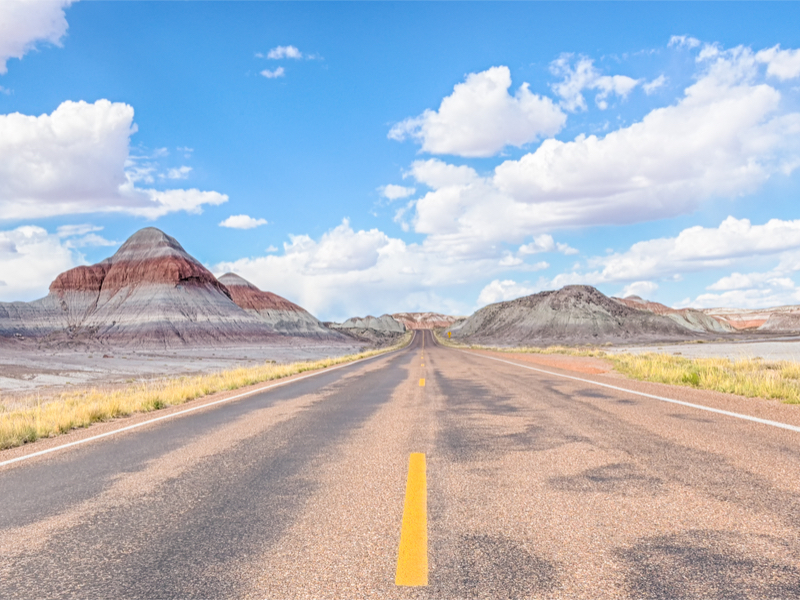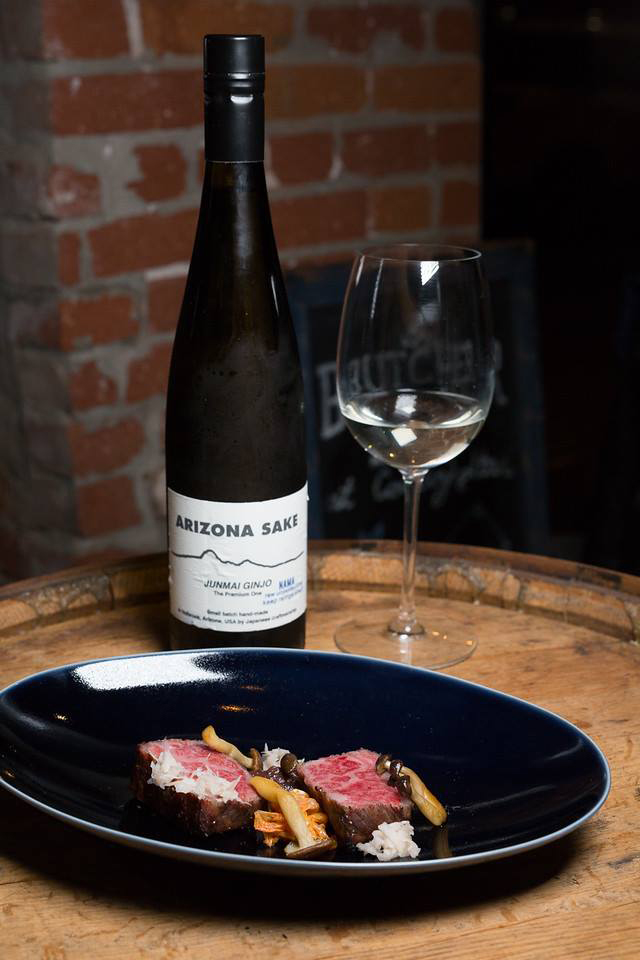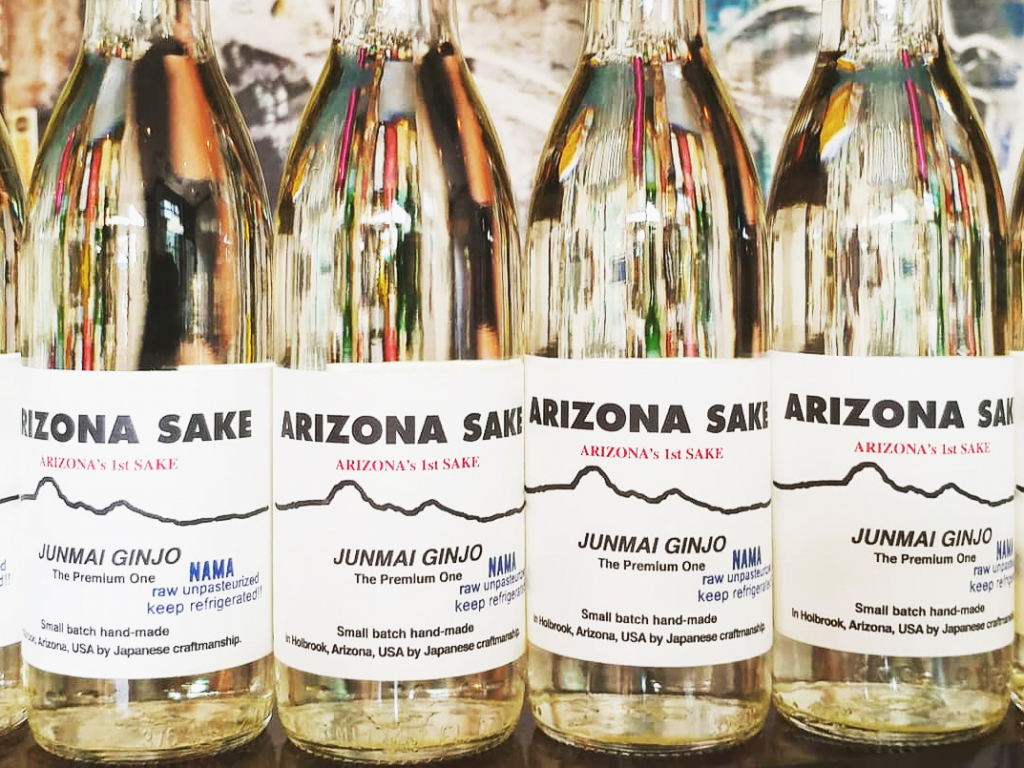Deep in the heart of the American Southwest lies the sleepy, arid town of Holbrook, Arizona, home to ancient Pueblo dwellings, Wild West shoot-outs, and a scenic stretch of Route 66. The latest claim to fame for Navajo County’s county seat (population: 5,000) is world-class Japanese sake.
In the same city that brought us the Wigwam Motel, Yokohama native Atsuo Sakurai works tirelessly in his temperature-controlled garage to produce award-winning junmai ginjo. “Fortunately, the city and my neighbors support me,” says Sakurai during a phone conversation. “I enjoy having friendships with my customers. That is the best part.”
Sakurai is perhaps the only first grade brewer producing sake in the US (in Arizona for sure), and this past spring his Arizona Sake was the only entrant to earn the gold award in the international category at Sake Competition 2018, Japan’s largest sake contest. “First of all, I was happy for the gold award,” says Sakurai. “I was happy I could make my clients happy, and of course, I appreciate my wife and kids, and friends here in Arizona and in Japan.”

Atsuo Sakurai (right) at Sake Competition 2018
It has been a long slog for the Yokohama native who picked up a taste for sake during his university days. He earned his first grade brewer certification after working in sake breweries in Akita and Niigata prefectures for 10 years and achieving the highest score on the national examination.
An entrepreneur at heart, Sakurai sought a sake brewing license from Japan’s National Tax Agency. However, with the domestic sake market in contraction and already crowded, his application was denied.
Sakurai looked overseas, with his eyes set on the US Pacific Northwest, which has a moist climate more akin to Japan’s sake-growing regions. Without a business network or financing, he couldn’t get a foothold, so Sakurai ended up in his American wife’s hometown: Holbrook.
“It was my last option,” says Sakurai. “There is no industry. It looks like business is slow. It’s the middle of nowhere. Fortunately, we have Route 66.”

Route 66 and the desert landscape near Holbrook, Arizona
Viewed as Grandpa’s drink, the struggles of Japan’s sake industry are well-documented, with domestic consumption one-third lower than it was during sake’s 1980s heyday. Sake guru John Gauntner says sales for non-premium sake, which makes up 75 percent of the market share, continue to drop 5 to 10 percent every year. However, he says the slump has been offset by a renewed interest in premium sake, domestically and abroad.
While overseas sales set record highs for the eighth year in a row, Gauntner says exports consist of mere 4 percent of the market.
“If that doubles, it’s still not 10 percent. If you look at French wine and Italian wine, you have about 35 percent of the national product being exported,” says Gauntner, the only non-Japanese certified Master of Sake Tasting. “Having said that, give it 20 years, and sake exports really could grow.”
There are approximately 25 sake breweries located outside of Japan, says Gauntner, including the large-scale California operations run by Japanese stalwarts Gekkeikan, Ozeki and Sho Chiku Bai. Meanwhile independently owned sake breweries are popping up in the US, Spain, Mexico, the UK, France and Norway.
“There are a lot more [overseas breweries] than there were a couple years ago, but I don’t think we are going to see like what you saw with the craft beer movement,” says Gauntner. “It’s really not something to rush into. Nobody’s going to make a ton of money overnight.”
Tony Mitchell, sake brewer for Fordham Abbey, the first Japanese-owned sake brewery in the UK, says sake is gaining popularity due in part to the ever-expanding sake competition at the International Wine Challenge, increased advocation from wine sommeliers and international sake promotional events.
“It’s a really exciting time to be making sake outside of Japan”
“It’s a really exciting time to be making sake outside of Japan,” says Mitchell. “I think sake will become very big. When you get the chance to break down peoples’ misconceptions and get them to try some high-quality sake, made with care and passion, 99 people out of a 100 become instant converts.”
Fordham Abbey opened this autumn at an 18th-century country estate outside of Cambridge. Following suit of many Japanese sake breweries that revamped as tourist destinations, Fordham Abbey serves as an events center and provides accommodation, tours and Japanese pottery lessons.

Fordham Abbey sake brewery just outside of Cambridge, UK
Blake Richardson launched Moto-I Ramen and Sake House, America’s first sake brewpub, in Minneapolis 10 years ago. Already running a successful brewpub, he says market research showed customers would support sake.
“I truly believe you can brew sake anywhere. Americans in general are interested in things that are new and things that have a history and a story. Sake for me was obvious,” says Richardson. “Sake continues to grow. There is interest. I think it has legs. Its determinant is based on education. Sake is intimidating. People will choose a beer over sake because they are too shy to say the name incorrectly. The quality is out there. The selection is there. That’s why it is so important to us to educate our customers.”
Richardson says Americans discovered a taste for fine wine in the 1970s, then gourmet coffee and now craft beer. If sake is going to have the same surge, he says it needs to become a staple on menus outside of Japanese restaurants.
“It’s going to take a lot of people who are willing to take some risks,” says Richardson.
Adds Gauntner, “Any pioneer business takes time…. For just a pure sake brewery, probably none of the smaller craft ones are self-sustainingly profitable yet. But things just take time in this industry.”
When Atsuo Sakurai started brewing sake in Holbrook, he found the dry weather played to his benefit. He doesn’t have to contend with fungus contamination during koji cultivation, something that bedevils Japanese brewers due to humidity. He also discovered the water supplied by Holbrook’s underground aquifer is so pure he can drink it straight from the tap.
It took two-and-a-half years for Sakurai to acquire equipment and proper business licensing. In 2017 he produced his first bottle of Arizona Sake, topping off 1,000 bottles in his first year. After initially providing samples to local restaurants, today Sakurai is selling high-dollar sake to more than 50 businesses in Arizona, including the state’s finest restaurants.
Phoenix-based food critic Chris Malloy calls Arizona Sake “a libation electric and groovy and world-class, a beautiful antidote to the heat of an Arizona summer.”

Arizona Sake
Sakurai, Holbrook’s Businessman of the Year, says he has started distributing to a restaurant in Hawaii, and has received interest from customers in Florida, California and Japan.
“In the sake industry, families have owned companies for generations. There is no chance for each person to set out on their own, to establish a sake business. They need to go outside of Japan,” says Sakurai. “I thought, I want to go anywhere that gives me a place to make sake. That’s what I thought, and I got the desert.”








